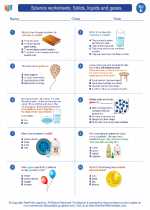Structure of Triglycerides
Triglycerides are composed of a glycerol molecule and three fatty acid molecules. The fatty acids can be saturated (no double bonds between carbon atoms) or unsaturated (one or more double bonds between carbon atoms). The type of fatty acids in the triglyceride affects its physical properties, such as its melting point.Functions of Triglycerides
Triglycerides serve as a source of energy for the body. They are also important for storing energy for later use. Additionally, they provide insulation and help protect organs in the body.Metabolism of Triglycerides
When you consume more calories than your body needs, the excess calories are converted into triglycerides and stored in fat cells. Later, when your body needs energy between meals, hormones release the triglycerides from fat cells and they are broken down into fatty acids and glycerol. These components are then used for energy production in various tissues of the body.Factors Affecting Triglyceride Levels
Several factors can influence triglyceride levels in the body, including diet, physical activity, genetics, and certain medical conditions such as diabetes and hypothyroidism.Study Guide
- What is the structure of triglycerides?
- What are the functions of triglycerides in the body?
- Explain the metabolism of triglycerides.
- What are the factors that can affect triglyceride levels in the body?
◂Science Worksheets and Study Guides Fifth Grade. Science worksheets: Solids, liquids and gases.
Study Guide Solids, liquids and gases
Solids, liquids and gases  Worksheet/Answer key
Worksheet/Answer key Solids, liquids and gases
Solids, liquids and gases  Worksheet/Answer key
Worksheet/Answer key Solids, liquids and gases
Solids, liquids and gases  Worksheet/Answer key
Worksheet/Answer key Solids, liquids and gases
Solids, liquids and gases  Vocabulary/Answer key
Vocabulary/Answer key Solids, liquids and gases
Solids, liquids and gases 

 Worksheet/Answer key
Worksheet/Answer key
 Worksheet/Answer key
Worksheet/Answer key
 Worksheet/Answer key
Worksheet/Answer key
 Vocabulary/Answer key
Vocabulary/Answer key

The resources above cover the following skills:
PHYSICAL SCIENCE (NGSS)
Matter and Its Interactions
Students who demonstrate understanding can:
Make observations and measurements to identify materials based on their properties.